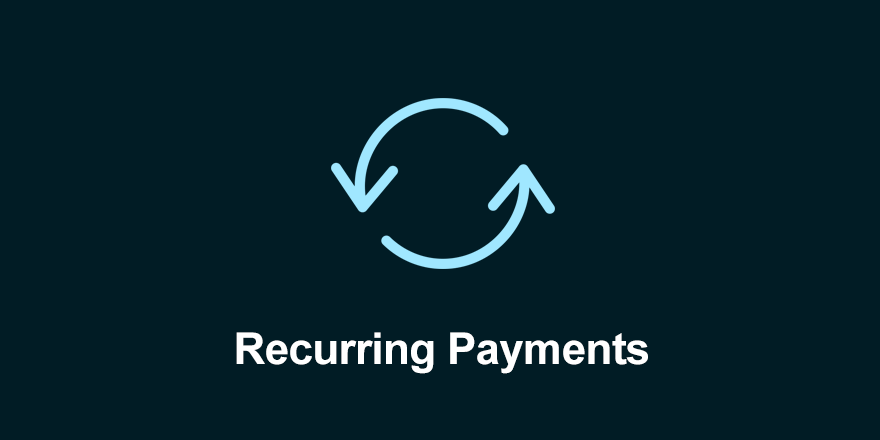Introduction: The Power of Recurring Payments in Business Growth
In today’s fast-paced digital economy, businesses are constantly looking for ways to increase efficiency, improve customer retention, and maintain stable revenue streams. One of the most effective strategies to achieve this is through recurring payments.
Whether you run a subscription-based service, an eCommerce platform, or a B2B SaaS company, implementing an automated billing system can streamline revenue collection, enhance customer experience, and create financial stability.
In this guide, we will explore the top three ways recurring payments contribute to business success, backed by industry insights and best practices.
1. Strengthening Customer Relationships & Loyalty
Convenience & Seamless Customer Experience
Consumers today expect frictionless payment experiences. Recurring payments eliminate the need for customers to manually enter their payment details for every transaction. Instead, they enjoy a hassle-free, automated billing cycle, ensuring continuous access to your product or service.
Reducing Payment Friction
One of the main reasons customers cancel subscriptions or fail to renew services is payment friction—whether it’s a declined transaction, expired card details, or a forgotten due date. Automated payment processing ensures that transactions go through without interruptions, reducing customer frustration and minimizing involuntary churn.
Enhancing Customer Trust
When customers know they can rely on consistent, automatic billing, they are more likely to stay engaged with your brand. Additionally, offering multiple payment options—such as credit cards, direct debit, digital wallets, and BNPL solutions—ensures that customers can pay in a way that suits them best.
2. Predictable Revenue & Improved Cash Flow Management
Creating a Stable Financial Foundation
Businesses that rely on one-time purchases or inconsistent transactions often struggle with unpredictable cash flow. With recurring billing, revenue becomes predictable and steady, allowing for better budgeting, forecasting, and investment planning.
Reducing Late Payments & Payment Collection Hassles
Traditional invoice-based payment models often result in delayed payments, negatively impacting cash flow. Subscription-based payments and automated billing eliminate this issue by ensuring payments are processed on a predetermined schedule.
Scalability & Long-Term Growth
As your business grows, managing payments manually becomes increasingly complex. Automated recurring payments allow companies to scale effortlessly, accommodating thousands (or even millions) of transactions without requiring additional resources.
✅ Example: A SaaS company that automates subscription billing can expand globally without worrying about manual invoicing, payment failures, or collection issues.
3. Increased Operational Efficiency & Cost Savings
Automating Payment Processes Reduces Manual Work
By implementing recurring payments, businesses eliminate the need for manual invoicing, payment follow-ups, and reconciliation. This not only saves time but also reduces human errors in billing.
Lower Transaction Fees & Processing Costs
Many payment providers offer lower transaction fees for recurring billing models compared to one-time transactions. Additionally, by using smart payment routing and tokenization, businesses can optimize transaction approval rates and minimize processing costs.
Integration with Accounting & CRM Systems
Modern subscription billing platforms seamlessly integrate with ERP systems, accounting software (e.g., QuickBooks, Xero), and CRM solutions (e.g., Salesforce, HubSpot). This ensures accurate financial reporting and improves customer data management.
Implementing Recurring Payments: Best Practices
If you’re considering integrating recurring payments into your business model, follow these best practices to maximize its benefits:
-
Choose the Right Payment Processor
- Ensure your provider supports multiple payment methods, including credit/debit cards, SEPA direct debit, digital wallets, and open banking payments.
- Look for a solution with built-in fraud prevention, such as AI-driven risk assessment.
-
Offer Flexible Payment Plans
- Give customers options for monthly, quarterly, or annual billing.
- Implement free trials or prorated billing to attract new users.
-
Ensure Compliance & Security
- Stay compliant with PSD2, SCA (Strong Customer Authentication), PCI DSS, and GDPR.
- Use tokenization to store customer payment details securely.
-
Monitor Payment Metrics & Reduce Churn
- Track failed transactions, chargebacks, and renewal rates.
- Set up automatic payment retries and send reminder emails before a subscription expires.
Conclusion: Future-Proofing Your Business with Recurring Payments
As businesses navigate an increasingly digital world, automating payments is no longer optional—it’s a necessity. Whether you operate in SaaS, eCommerce, retail, or professional services, embracing recurring billing solutions offers unmatched convenience, financial stability, and long-term scalability.
By strengthening customer relationships, improving cash flow, and enhancing operational efficiency, recurring payments pave the way for sustained business success.
Bonus: Frequently Asked Questions (FAQs) on Recurring Payments
Q1: What industries benefit the most from recurring payments?
Answer: SaaS, eCommerce, fitness & wellness, online education, insurance, telecom, and streaming services benefit the most from automated billing.
Q2: Can I offer multiple billing cycles for customers?
Answer: Yes! Offering flexible billing cycles (monthly, quarterly, annual) helps cater to different customer preferences.
Q3: What happens if a customer’s card expires or a payment fails?
Answer: Advanced dunning management systems retry payments and notify customers, reducing involuntary churn.
Ready to Implement Recurring Payments?
At [Your Company Name], we help businesses seamlessly integrate automated billing solutions to drive revenue growth and customer satisfaction. Contact us today to learn how we can optimize your payment processes.






